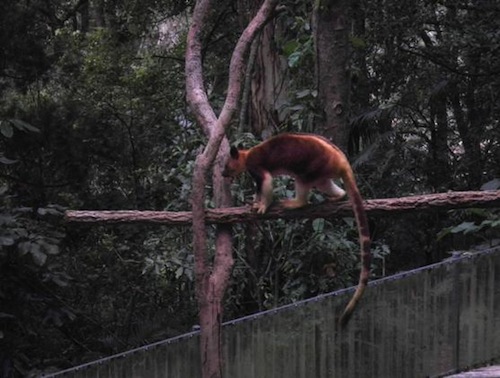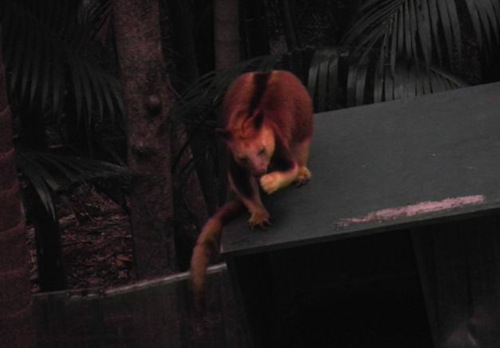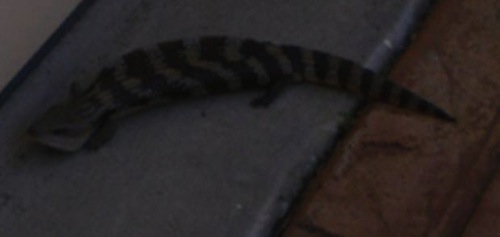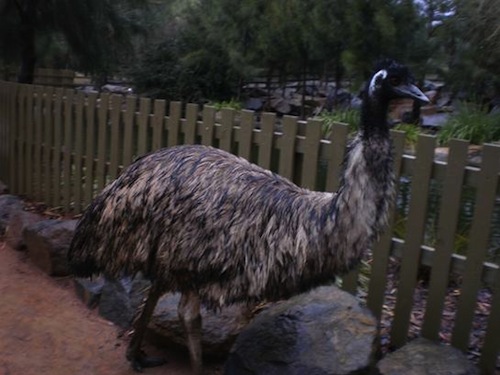G'day again and welcome to part two of my wacky wildlife adventure. Today I'll be showcasing three more animals: the tree kangaroo, the blue tongue lizard and the emu. I'll be sharing photos, facts and information of these exotic animals with you. All the photos in this particular article were taken by me at zoos and wildlife sanctuaries. Take time your time to study, learn and discover. Enjoy!
People have often asked me if I've seen a kangaroo or see kangaroos often. I've seen many kangaroos, but before my family ventured to a wildlife sanctuary I had never seen or heard of the tree kangaroo. It became one of the most unusual animals I've ever seen looking like a strange mixture of a monkey, possum and kangaroo all at the same time. Once I got home and did some eager research I discovered why I had never heard of such a creature. Unfortunately, this is because the tree kangaroo is endangered and incredibly rare due to hunting and habitat destruction. More and more of the rainforests these animals call home are disappearing over time.

The photos above and below picture the Goodfellow's tree kangaroo, which is actually native to New Guinea (an island close to Australia). There are two species of tree kangaroo found in Australia: the Lumholtzs and the Bennetts. There are 10 species altogether, the others found in New Guinea.

Tree kangaroos are similar in some ways to their ground dwelling relatives. Not only do they look strikingly similar, like normal kangaroos, they also have a pouch, long tail and give birth to one joey at a time. However, there are many things that make them unique. Unlike normal kangaroos these tree dwellers have short, wide feet with sharp claws to help them grip tree branches. They will spent almost all of their time in the trees where they sleep during the day and forage for fruit and leaves in the canopies at night. Very little is known by scientists about how these creatures mate. Tree kangaroos are mysterious indeed!

Australia is home to more big, bizarre and beautiful lizards than any other part of the world. This next photo is a picture of a common eastern blue tongue lizard that was basking in the sun one day on the pavement near our garage door. Unsurprisingly, the blue tongue lizard received its name because of its dark blue tongue which it displays when feeling threatened. They also have a pink mouth, which in contrast to the blue tongue can be frightening to predators.
These lizards shelter under leaf litter, rocks, and logs or in burrows. Like most lizards, they do not do not produce their own body heat and rely on the sun and their surroundings to raise their body temperature. They will bask in the sun like the one shown in the photo in the morning before foraging for food later on in the day.
Blue tongues are usually solitary creatures, although mating usually occurs between September and November when the males pursue the females. They give birth to live young three to five months after mating. Within a few days the young are independent and leave to fend for themselves. Blue tongues are a valuable attribute to a garden because they keep the number of pests such as snails and caterpillars down. Not only this, apparently some people keep them as pets!

This is a photo I took at a zoo of an emu; it is the largest bird in Australia and the second largest in the world (the ostrich being the largest). The emu belongs to a family of flightless birds called Ratites almost all extinct today except for emus, ostrich, cassowary, kiwis and rhea.
This photo shows this creature's wide beak, used for peaking grass and browsing in bushes. They will eat fruits, insects, seeds, flowers, grains, green shoots or anything else they can get their beak into. The food they swallow goes into a part of the emu?s body called the gizzard. Emus will sometimes even swallow large stones to help their food grind up properly in their gizzard. They have long legs, with three clawed toes on each and are extremely fast runners.
In most circumstances emu females are larger than males. Most times emus will find a partner during summer and breed during winter. Emu females will lay big, dark green eggs over a time of 5-9 days and leave the male emu to sit on the nest for 8 weeks until the chicks have hatched. The female will not stay with the eggs or chicks and instead regains her energy for the next breeding season when she will find a different male. Father emus do a great job of caring for the chicks without the mothers!
All these animals I find to be unique and interesting in their own individual ways. If there's anything else you would like to discover about these animals I've provided a list of sources below, or you can do some research of your own! There are more animals to be showcased next week; so please keep a lookout for that.
Study, learn, discover,
- Zicker
Author's Note: If you would like to discover more about Australia's lizards go to the website below:
http://www.outback-australia-travel-secrets.com/australian-lizards.html
If you would like to find out more about these animals go to the sources below:
Tree Kangaroo:
http://www.australian-information-stories.com/tree-kangaroo.html
http://www.kangaroo-protection-coalition.com/treekangaroo.html
http://wwf.panda.org/what_we_do/endangered_species/tree_kangaroo/
Blue Tongue Lizard:
http://www.outback-australia-travel-secrets.com/blue-tongue-lizard.html
http://www.australiazoo.com.au/our-animals/amazing-animals/reptiles/?animal=blue-tongue_lizard&reptile=lizards
http://australianmuseum.net.au/Eastern-Blue-tongue-Lizard
Emu:
http://www.kidcyber.com.au/topics/emu.htm
http://www.planetozkids.com/oban/animals/facts-emu.htm
http://www.australiazoo.com.au/our-animals/amazing-animals/birds/?bird=ratites&animal=emu